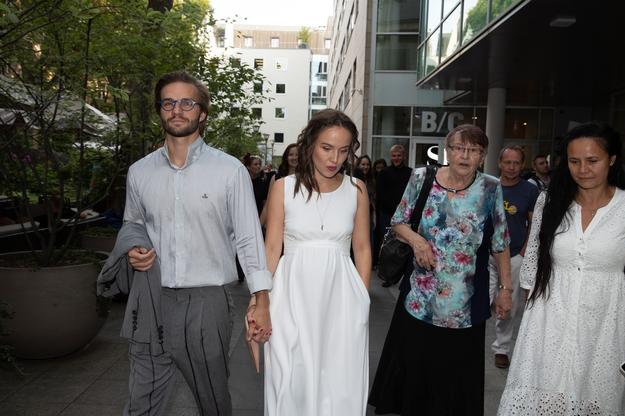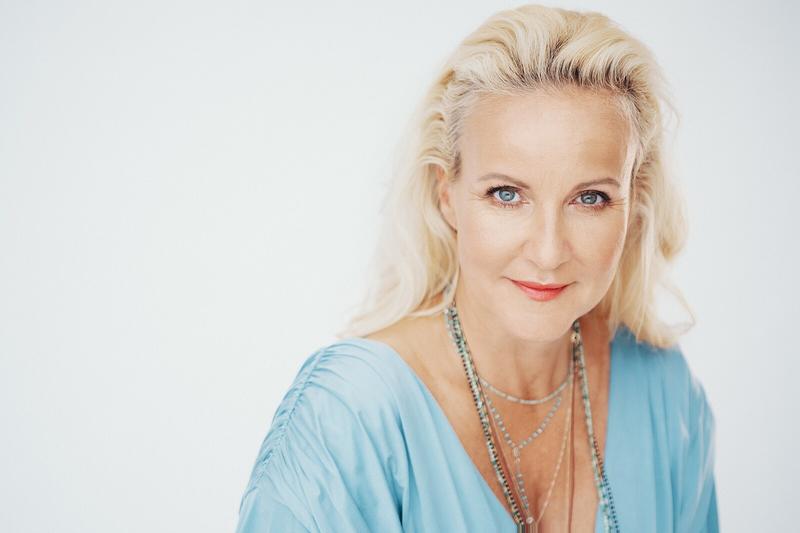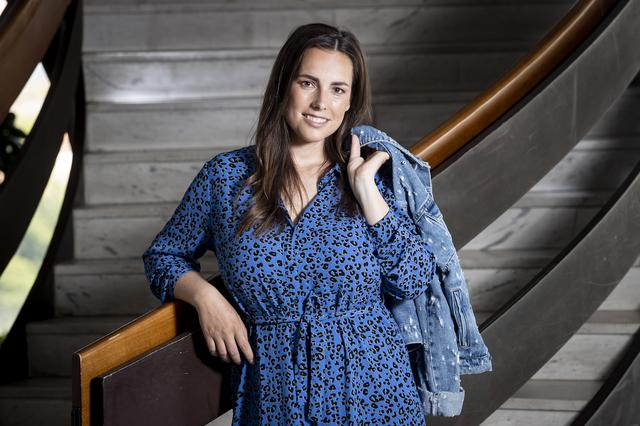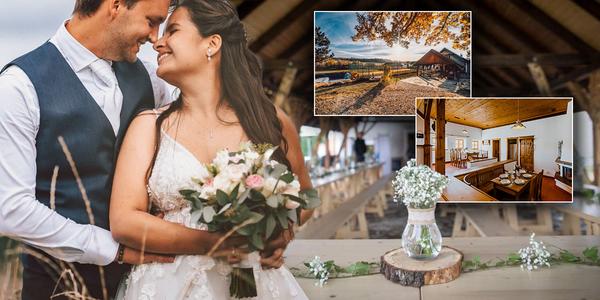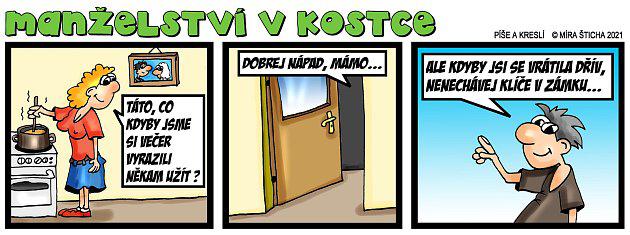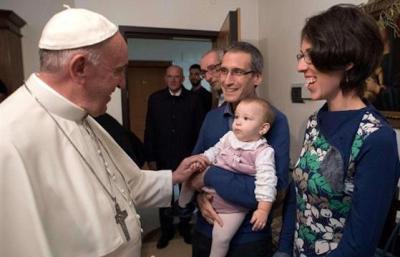Mongolian fashion. Minimalist cuts, natural fabrics and embroidery<
Monika Slavíčková began to devote herself fully to the Monika Mongol brand three years ago. And why "Mongol"? Her brother started calling her that because she often came across the idea that she had an Asian look. And the new nickname has taken hold so much that her closest friends still address her to this day. Perhaps that is why she was inspired by traditional Mongolian costumes when creating her bachelor's thesis and eventually went to Mongolia.
LN: First there was a nickname and then Mongolia? Why was your bachelor thesis inspired by this country? The idea originated seven or eight years ago on an internship in Britain, where many foreigners live. During my studies, we dealt a lot with the topic of national identity, and I was always fascinated by the old tribes and their history. The topic we were given at the end of the internship was color, and I was also very interested in a book with old Indian costumes woven with the ikat technique, which I found in the library. To this was added my nickname "Mongol" and it was clear that the final work, in addition to Indian weaving techniques, which I translated into embroidery, will be reflected in the old Mongolian costumes.
LN : What did you know about Mongolia then? Actually, nothing at all, so I started looking for what I could. It wasn't much, so I contacted the Department of Mongolian Studies in Prague, where I was referred to a student who wrote a bachelor's degree on Mongolian textiles. I got a lot of valuable information from her, but even that was not enough. So it occurred to me to write to Ivana Groll, our ambassador to Mongolia. She was thrilled and wrote back that she knew a lot of designers and people in Mongolia who were interested in fashion. She wanted me to come to Mongolia, but I didn't have the money for a trip like that at the time. In the meantime, I presented my Mongolian-inspired collection at the Shooting Fashion Stars student show, met a lot of Mongols living in Prague, and after graduating from school, I moved to the capital, where I live and work to this day.
LN : So you only got to Mongolia after the "Mongolian" collection was ready? Yes, after hard work, I received a grant from the Ministry of Foreign Affairs and went to Mongolia alone. I was twenty-six at the time and I was traveling to Asia for the first time. My stay lasted a week and I had a very busy schedule; I lectured on fashion at universities, led art workshops, visited several design studios and photographed my Mongolian-inspired collection for a local fashion magazine.
LN : How do you perceive the word "Mongol"? I have found that it has negative connotations and is often used as an insult. But I never took it that way. I've always been interested in traditional cultures and it comes to my mind to curse someone with ethnicity. I also talked about the name of my brand with an expert from London who dealt with the issue of brand identity. He told me it's a great name for an international brand because it's easy to remember and sounds nice. In addition, many people think that Mongol is my last name. It always makes me laugh and at the same time pleases me. It can be seen that "Mongol" is a real part of my life story.
MONIKA SLAVÍČKOVÁShe was born thirty-three years ago in Boskovice, South Moravia. She graduated from the Secondary School of Clothing Production Operator and continued her education at the Higher Vocational School in Brno with a focus on design and art. Then she started studying clothing design at Tomas Bata University in Zlín, where she completed an internship in Great Britain. For three years now, she has been fully active in Dejvice, Prague, under the Monika Mongol brand. She is a vegetarian, practicing yoga, meditating and learning about new cultures. She and her husband traveled much of Southeast Asia. |
LN : How are your current models different from your older work? At school, I had the feeling that the more complex the cut and the idea, the more interesting the resulting model will be. So I kept thinking about how to make each piece as special as possible. But such artistic artifacts often bordered on non-carrying, they did not tell the layman anything, and their production was so expensive that they were rather unsaleable. That's why I started thinking about what a real customer actually expects from clothes for casual wear and where they wear them. The experience from the internship in Britain, where we focused more on the needs of regular customers, helped me with that. I'm a minimalist myself, so I'm more and more inclined to simpler cuts and embroideries of smaller dimensions. Now I'm basically coming out of my wardrobe, what I'm wearing or I'd like to wear. That's why I sew most things myself.
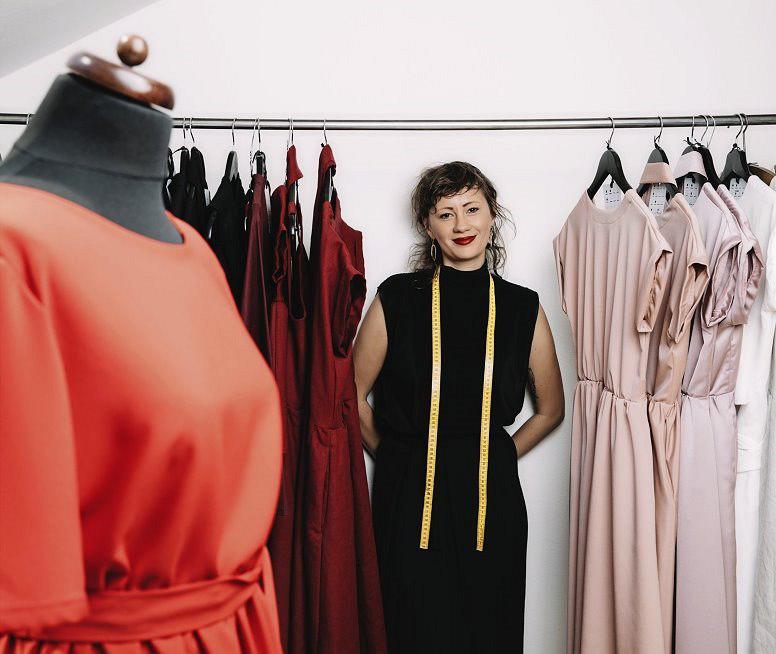
LN : When did you start working with the embroidery that is so characteristic of your work? Even before I went to college. My brother once wanted me to sew a hole in his sweatshirt, and it occurred to me that it could be sewn in different ways. So I started embroidering. I started playing with her and over time I developed my own technique, in which I embroider various patterns using an ordinary sewing machine. At that time, however, I did not take it as a characteristic of my brand. I solved the identity of my own brand to a high level, when I started to combine embroidery with running threads and the surroundings began to show interest in it. That's when my first custom embroidery started.
LN : Is it possible to understand embroidery as a trend? The traditional embroidery of various ethnicities or folk costumes does not disappear anywhere and is not affected in any way by the trend. But at a certain time, everything can be understood as a trend, because trends are more or less a reaction to current events around us. The reason embroidery has become so popular lately is the human desire to return to national traditions and identity. In our country, I perceived a strong embroidery trend, especially three years ago, when I returned from Vietnam. I was full of Asian inspiration, which was just "in", and I got into a time when the embroidery was really squirming. They all wore embroidered bombers and I had quite a few embroidery orders. But like every trend, this one has gradually declined and I myself have probably gotten quite tired of embroidery, so I'm not dealing with it that much at the moment. However, I recently received an order for an embroidered wedding dress, and during the coronavirus crisis, I just embroidered the picture for fun. I enjoy moving the embroidery somewhere else, but it is very time consuming.
LN : Is European embroidery different from Asian embroidery? Traditional Asian tribes often embroider patterns with deep symbolism and mostly use basic stitches. Unfortunately, I did not get to the specific technical details of the individual strains. During my travels in Asia, I often came across the fact that they showed me and offered the only tourist counterfeits, which had nothing to do with local authentic embroidery.
LN : Did you try to create anything other than clothes and embroidery? I started designing backpacks four years ago. I made the first one for myself and used parts from an old leather jacket, which I bought in a second hand. It felt good to be able to breathe life into an old jacket that no one wears anymore, and I also liked the idea of recycling. I'm a vegetarian myself, so I thought that the skin that caused an animal to die would be processed even further. My friends also attracted the backpack, so I also made a few pieces for them. But I needed more and more jackets for production and finding the usable ones became more and more difficult. I have partly understood that sustainability can be unsustainable on a large scale. Monika Mongol backpacks can still be purchased, but I must admit that I put energy into clothes instead of new prototypes. They are more variable, which is why I probably enjoy them more.
LN : When did you actually find out you wanted to go out of fashion? Sewing has always attracted me, and as a child I sewed clothes for my dolls. Then I found an old pedal sewing machine in the attic and I was very excited to make my job easier. In a way, I was inspired by my dad, who sewed my clothes and once made a school bag for me.
LN : Did you sew as a teenager, or did you deal with completely different things at the time? I grew up in a small town where fashion trends were set by Vietnamese markets, and that was nothing for me. I don't like it when someone else is wearing the same piece of clothing as me. I wanted - like any girl - to like the boys and dress completely differently, in an original way. So I started sewing t-shirts and experimenting differently.
LN : Then where did the path to the study of clothing lead? I was a bit of a nerd in elementary school, so I went to high school. But I kept sewing and studying at the grammar school did not fill me because I lacked handicrafts there. I knew I wanted to study something creative in college, so the gym slowed me down a bit. So a year later, I transferred to a textile high school, which was in Boskovice. I had a bit of a problem there at the beginning, because my field was perceived as being attended by people who learn harder. It occurred to me that most people were only there for graduation, not because they enjoyed it. There were thirty of us in the class and I am probably the only one who is still involved in the field. The school was over, but I learned all the practical things related to the clothing industry, from economics to production technology to sewing.
LN : Did this knowledge help you in your further studies? The college was focused on more disciplines, from stage costume to design, so I got a very good artistic foundation there, and I even tried out a semester-long art work on the subject. I then took advantage of all this at the university in Zlín, where I subsequently applied for clothing design. There we focused mainly on art and marketing, but I lacked a bit of advice on how to work with art in practice. But the great thing was that we had the opportunity for six months of experience abroad, and thanks to an internship in Nottingham, UK, I tried first-hand how to work for a real brand. It occurred to me that in an environment where thousands of identical pieces of clothing are pouring out at once, I do not want to figure in the future, so I began to lead my work on the path of individuality.
LN : Are you preparing a new collection? I recently came up with a gift for a friend who was born a daughter. I sewed her children's clothes and my friends liked them so much that I continued to develop the children's collection. This year I also started preparing a small wedding collection for the first time. However, due to the coronavirus situation, I had to postpone it until next year. In my opinion, fashion will never stop, there will always be something to work on and I am looking forward to what the future holds next.


 Tags:
Tags: Prev
Prev
